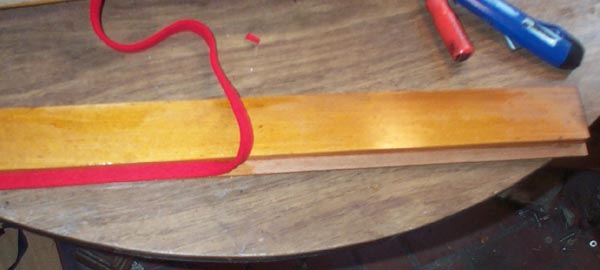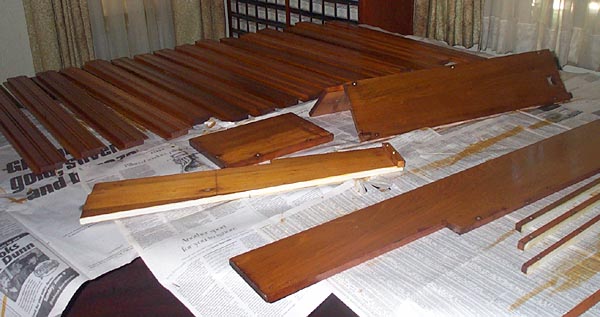
Chapter 24.1 Preparing the Swell Box Parts
The swell shutter panel, which covers the entire front of the 8' reed rank area, was dirty and ragged looking. The slats were all piece marked before disassembly, so they could be put back in the right order. All the parts, including the frame and swell box sides and top (not shown) were washed, masked, and given a fresh coat of orange shellac. Tip: when washing old shellacked case and support parts, use Comet Cleanser. The oxidizer (bleach) in Comet, destroys or removes a microscopic layer of splotchy, darkened shellac, leaving the pieces looking quite respectable.

All the plated hardware was cleaned up, using "Lime-A-Way". I used to use Naval Jelly, but the new formula, lacking phosphoric acid, is no longer very effective. Lime-A-Way, meant to aggressively attack rings in the toilet bowl, contains hydrochloric acid, and does a fine job removing surface rust. But one must use rubber gloves. After the rust is cleaned off, immediately rinse the piece in running water, and drop the pieces in a big bowl of household ammonia and water, to neutralize the acid. Otherwise the part will immediately begin to re-rust before your very eyes. On steel, an acidic environment (HCl), promotes rusting, whereas a basic environment (NH3OH) prevents rust. Finish with a spritz of WD40, and allow to dry.
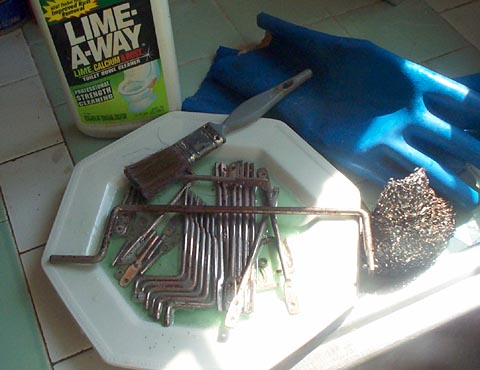
The three notched bars that act as "flanges" for the shutter hinge rods, were rebushed. To avoid binding, the swell slats are rather widely spaced, and the hinge rods turn loosely in wide grooves in this bar. So, to avoid noise, these grooves are bushed with the thickest, white-center trapwork bushing cloth.
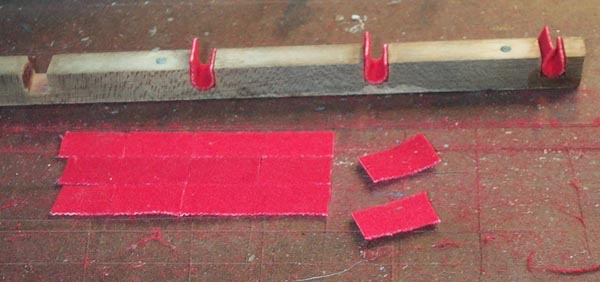
The bar that causes all the slat crank arms to turn in synch, was broken. A new one was made, using the old piece as a drilling template. The link bar, that connects this bar to the swell actuating crank, was missing altogether. A new one was fabricated. One must be careful to unhitch this linkage before removing the swell shutter panel to gain access to the reeds; or else these parts can easily be broken, So it is no wonder that they were broken or missing. The holes were bushed in the normal manner, using medium cloth.

The overlapping edges of the slats were edged with thick red felt. Medium back check felt, 0.164" thick; Schaff product number 2308, was found to be an exact replacement. It is hard to cut such a thick, rather dense (and expensive) material into neat, 1/2" wide strips without waste. The following method was devised:
1) Clamp a piece of aluminum bar stock to the cutting board as a backstop, or reference line. 2) Push the square edge of the felt stock firmly up against the backstop, all across its width.

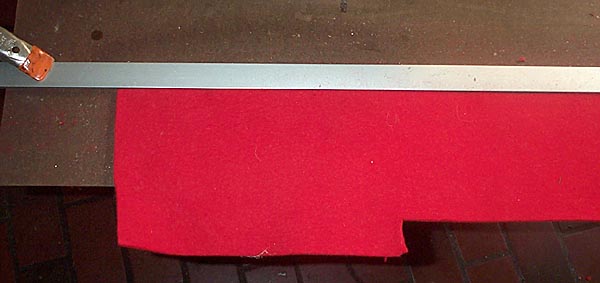
3) Clamp a straightedge on top of the felt, using a piece of 1/2" stock as a spacer, to position the straightedge exactly 1/2" from the edge of the felt. 4) Cut along the straightedge. Work from a standing position to keep the knife as vertical as possible, and use a new "snap" of the blade for every cut, to make the strips as square and neat as possible.
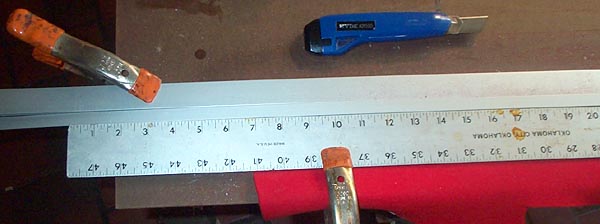
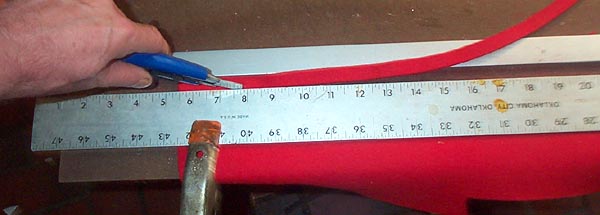
Hot-glue the strips to the upper, inner rabbit on each slat. Also, strips are glued to the inner rabbit on the lower horizontal piece of the frame, to mate with the unfelted lower edge of the bottom slats.
